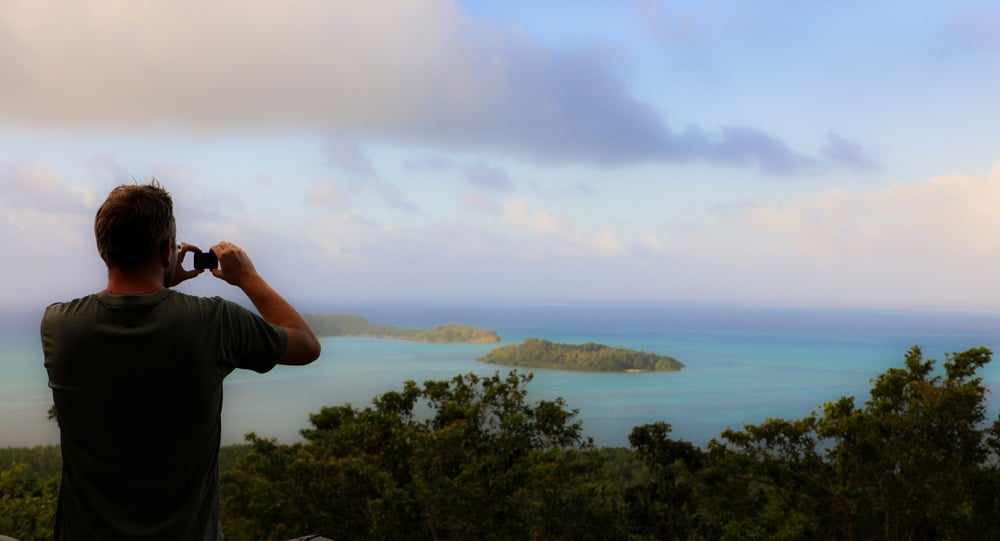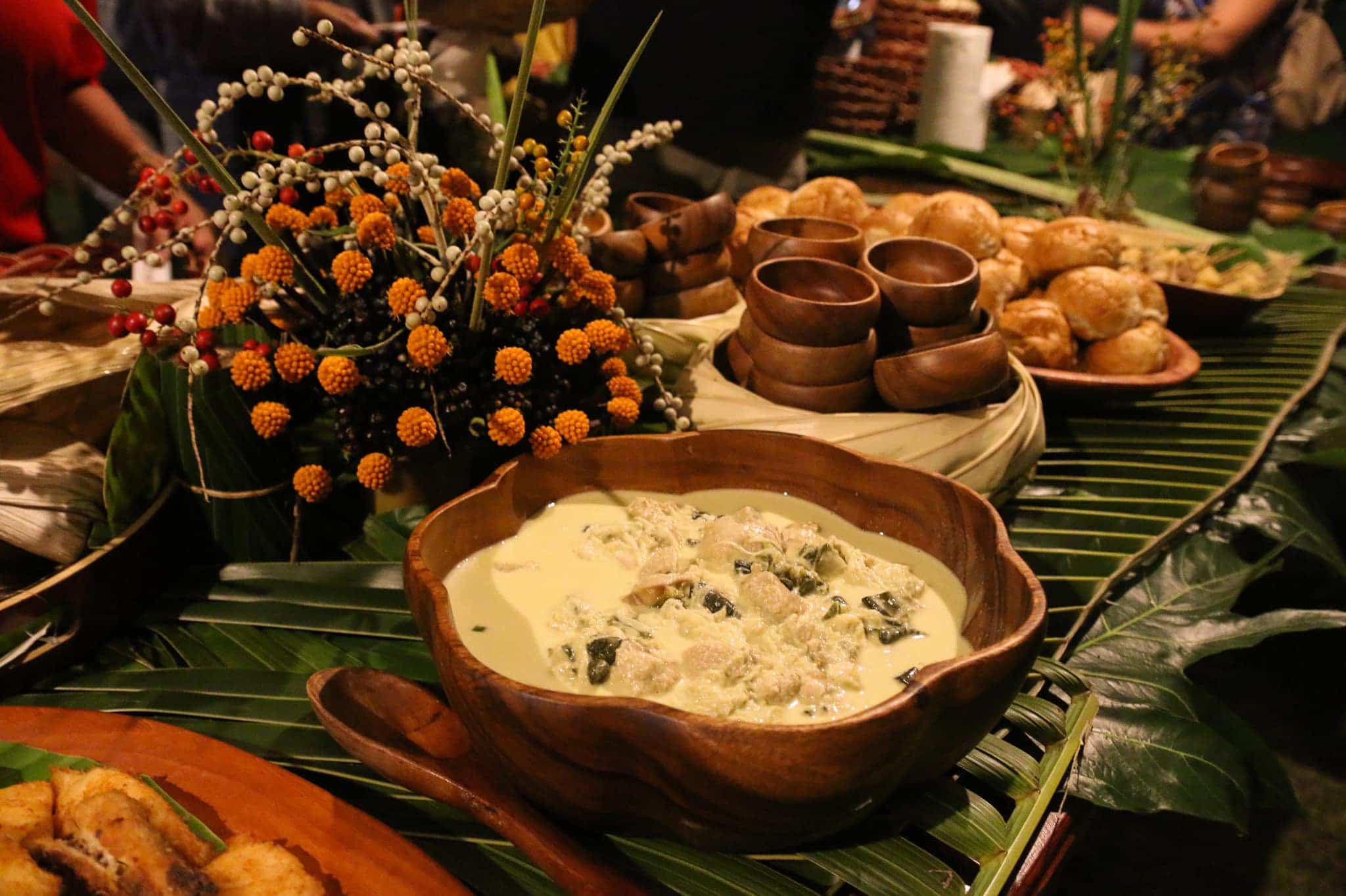News
Palau aims to become first Carbon Neutral Tourism Destination

 Project to make Palau a carbon neutral destination launched by Palau Bureau of Tourism, Sustainable Travel International, and Slow Food.
Project to make Palau a carbon neutral destination launched by Palau Bureau of Tourism, Sustainable Travel International, and Slow Food.
The Palau Bureau of Tourism, Sustainable Travel International, and
Slow Food have launched a new project in Palau that aims to mitigate the tourism sector’s carbon footprint and establish Palau as the world’s first “Carbon Neutral Tourism Destination.” The project is taking an innovative destination-level approach that includes promoting local food production within tourism and developing a carbon management program for tourists. This project supports the objectives of the Coalition of Fragile Ecosystems (COFE) and International Cooperation and Development Fund (TaiwanICDF) and has been endorsed by various government agencies, including Palau’s Ministry of Natural Resources, Environment and Tourism; Ministry of Community and Cultural Affairs; Ministry of Education; the Our Oceans
2020 Organizing Committee; and the Office of the President.
Known for its unspoiled natural beauty and pristine seas, the Pacific Island nation of Palau is regarded as one of the top marine tourism destinations in the world. Last year, more than 89,000 international tourists visited the country, which has a population of just under 22,000. As such, tourism represents the islands’ main source of economic income and employment.
As a small island destination, Palau is extremely vulnerable to the impacts of climate change, which threaten the islands’ marine ecosystems, coastal communities, and tourism industry.
While tourism is the economic lifeblood of the island, it also contributes to the climate crisis. Tourists are responsible for a significant portion of Palau’s carbon footprint as they travel to the remote island by plane and consume food imported from overseas.
In recent years, Palau has taken extensive measures to further environmental protection and responsible tourism. This includes establishing one of the world’s largest marine sanctuaries; creating the world’s first mandatory eco-pledge (Palau Pledge) that all visitors are required to sign upon entry; banning tour operators from utilizing single-use plastics and styrofoam; and protecting its marine environment through the adoption of the world’s strictest national sunscreen standard. This bold new initiative, which is being led by Sustainable Travel International, builds upon the country’s past efforts to specifically address the tourism sector’s climate impact.
This project will reduce the carbon footprint of tourism in Palau by increasing the proportion of food that is sourced from local producers and reducing the industry’s dependence on imports. Among other activities, the project will accomplish this by celebrating the islands’ gastronomic heritage and building the capacity of farmers and fishers to market their products to tourists. Along with combating climate change, this will create income-generating opportunities for local communities and improve food security on the islands. A specific emphasis will be placed on sustainable production and empowering women producers to participate in the tourism value
chain.
To compensate for tourism’s unavoidable emissions, the project will develop a first-of-its-kind carbon management program for tourists to Palau. The new online platform will allow visitors to calculate and offset the carbon footprint associated with their trip, including both their travel to
and activities in Palau. In line with Palau’s leadership in marine conservation, the offset contributions will be invested in blue carbon initiatives, such as mangrove restoration, or sustainable production activities in the region that reduce CO2 emissions. It is estimated that
this program has the potential to raise over USD $1 million a year for these carbon reduction initiatives.
“If the current COVID-19 crisis has taught us anything, it’s that we must strengthen our nation’s resilience to external threats – the greatest of which is climate change,” said Kevin Mesebeluu, Director of the Palau Bureau of Tourism. “Palau is blessed with some of the world’s most pristine natural resources, inherited through culture and tradition, and placed in our trust for the future generation. We must work to actively protect them, while also investing in our people. Palau embraces sustainable tourism as the only path forward in the new era of travel, and we believe that our destination can and must be carbon neutral.”
“This project has enormous potential to transform the traditional tourism model and is a notable step towards lessening the industry’s climate impact. Destinations around the world face these same challenges of balancing tourism growth with environmental protection. Carbon neutrality is the future of tourism and the direction that all destinations must head as they recover from COVID-19. We commend Palau for their continued leadership, and hope this inspires other destinations to strengthen their own climate resilience strategies,” said Paloma Zapata, CEO of Sustainable Travel International.
“The rapid growth of an unsustainable tourist industry based on broken food systems has been a key driver of the climate crisis and ecosystem destruction. This project represents the antithesis, a solution that strives to strengthen and restore value to local food systems, reduce the cultural and environmental damage caused by food imports, and improve the livelihoods of food producers both in Palau and beyond,” said Paolo di Croce, General Secretary of Slow Food International.
Project updates will be shared regularly on www.sustainabletravel.org
News
Book Review: Fire on Monroe Bravo by Fred Lockwood

Fire on Monroe Bravo is the latest book in the Jack Collier series by Fred Lockwood. Our story begins with our lead characters, Jack and Sandro, owners of Marine Salvage & Investigation Company, arriving on the Monroe Bravo Oil & Gas Platform in the North Sea. Having secured a contract for their vessel the MV Stavanger to act as support ship to the platform for TransGlobal Oil, our protagonists are on a celebratory visit.
However almost as soon as they arrive a series of explosions rock the platform, causing huge damage, loss of life and the very real danger of a massive human, ecological and financial disaster.

As the danger mounts for both our heroes and the surviving workers, Jack and Sandro will have to escape the inferno, all while trying to save the platform and the men still trapped unable to help themselves.
The disaster sets the scene for the unfolding story lines following the fate of the platform and our main characters, the police investigation into a suspected terrorist act and the actions of TransGlobal Oil as they attempt to navigate the pubic outcry and financial repercussions.
In his eighth book, Fire on Monroe Bravo, Fred Lockwood delivers an explosive thriller, with plenty of above and in-water drama, and our heroes fighting for survival, what more can you ask for?
We thoroughly recommend this read and look forward to the next in the series. For more information about his book series, you can check out the reviews of his previous books here on Scubaverse.
- Title: Fire On Monroe Bravo
- Author: Fred Lockwood
- ISBN: 979-8325324536
Available in a paperback version and for Kindle from Amazon and book stores.
Blogs
Alonissos: The complete diving destination (Part 1)

In June we were incredibly fortunate to be invited to dive in Alonissos, a small Greek Island in the Sporades island chain located in the North Aegean Sea. While I have long been a big fan of the Greek Islands as a great holiday destination, I had not had the opportunity to do any diving on previous visits and Mike and I were extremely excited to see what Alonissos had to offer both above and below the surface!

The Sporades are easily accessible via the airport in Skiathos (the first island in the chain), which is served by Jet2 flights from all major UK airports from May through October. Numerous ferries and charter boats make island hopping from Skiathos Town a breeze. After an hour boat ride, the picturesque port of Patitiri was a wonderful introduction to Alonissos, where we were met by our gracious hosts Kostas of Albedo Travel and Dias of Alonissos Triton Dive Center. Mike and I were delighted to be staying at the Paradise Hotel, aptly named for its stunning views over the sea and great location for walking to the waterfront.

Alonissos is beautifully situated in the National Marine Park of Alonissos and the Northern Sporades, the largest marine protected area in Europe. The surrounding seas offer fabulous marine life, including incredibly rare species such as the Mediterranean monk seal. They boast deep walls covered in gorgonians and sponges, stunning topography with caverns, swimthroughs and pinnacles, and the first accessible ancient shipwreck from 500BC!

In locations where historical sites have been reported, the waters are largely restricted, but with collaboration between government, underwater archeologists and dive centres, incredible underwater museums are being created for a truly unique diving experience. Alonissos is home to the first of these, the Ancient Shipwreck of Peristera Accessible Underwater Archeological Site. The chance to dive into history (along with reports of healthy reef life and amazing underwater topography) meant Mike and I were keen to get in the water.

Our introduction to the diving around Alonissos was at the Agios Georgios Pinnacles, in the channel between Alonissos and Skopelos. This fantastic site was named “The Chimney,’ and proved to have a huge amount to see. We got to a decent depth here (over 25m), and marvelled at a colourful reef wall with a wonderful swim through whose rocky walls were absolutely covered with life. As well as brilliant topography there was no shortage of macro life here. We saw numerous nudibranchs, five different species in total. The second dive at Mourtias reef nearby was a shallower dive along a nice wall with lots of crevices. Several moray eels and grouper called this site home. We enjoyed looking in the crevices for lobster and smaller benthic life, such as cup corals and tunicates.

Our itinerary allowed us two dives a day with afternoons left to explore the island with our hire car and evenings to enjoy the famous Greek hospitality. This proved to be a lovely mix of in-water and land based diversions.

The next days diving to the Gorgonian Gardens and Triton’s Cave was to be even better! These two stunning sites are nothing short of fabulous. The Gorgonian Gardens was a deep wall near to the Agios Georgios islands. The ever-present currents in this deep channel meant that the sea life was amazing … the namesake Gorgonian sea fans dotted the wall at a depth of 30 to 50 meters, getting ever larger the deeper we went. Above 30m was by no means less beautiful, with sponges, corals, scorpionfish, moray eels and some rare and colourful nudibranchs.

The second shallower dive of the day was to Triton’s Cave or the Cavern of Skopelos, on the east side of that island. The spectacular rock formations had wild striations both above and below the water making a truly epic topography. The cavern entrance was at 14m, and big enough for a buddy pair, winding up to 6m and passing two beautiful windows out into the blue. Emerging from the cavern, the light at the shallower depths and the incredible rock formations made for a fantastic gentle swimming safety stop and we all surfaced by the boat with massive grins.

Check out our next blog :Alonissos: The complete diving destination (Part 2)” to hear about our amazing dive on the 2500 year old Peristera Wreck!
Thanks to:
Alonissos Triton Dive Center https://bestdivingingreece.com/
Albedo Travel https://alonissosholidays.com/activities/
Paradise Hotel https://paradise-hotel.gr/
Alonissos Municipality https://alonissos.gr/en/
-

 Blogs2 months ago
Blogs2 months agoDiving With… Nico, Ocean Earth Travels, Indonesia
-

 News1 month ago
News1 month agoMurex Bangka Announce New Oceanfront Cottages & Beachfront Dining
-

 Blogs2 months ago
Blogs2 months agoA new idea in freediving from RAID
-

 Marine Life & Conservation1 month ago
Marine Life & Conservation1 month agoIceland issue millionaire whale hunter a licence to murder 128 vulnerable fin whales
-

 Marine Life & Conservation2 months ago
Marine Life & Conservation2 months agoThe Shark Trust Great Shark Snapshot is back
-

 News3 months ago
News3 months agoCharting New Waters; NovoScuba Goes Global with the Launch of their Revolutionary Dive Training Agency!
-

 Gear News1 month ago
Gear News1 month agoNew Suunto Ocean – a dive computer and GPS sports watch in one for adventures below and above the surface
-

 Marine Life & Conservation Blogs2 months ago
Marine Life & Conservation Blogs2 months agoBook Review: Plankton


















